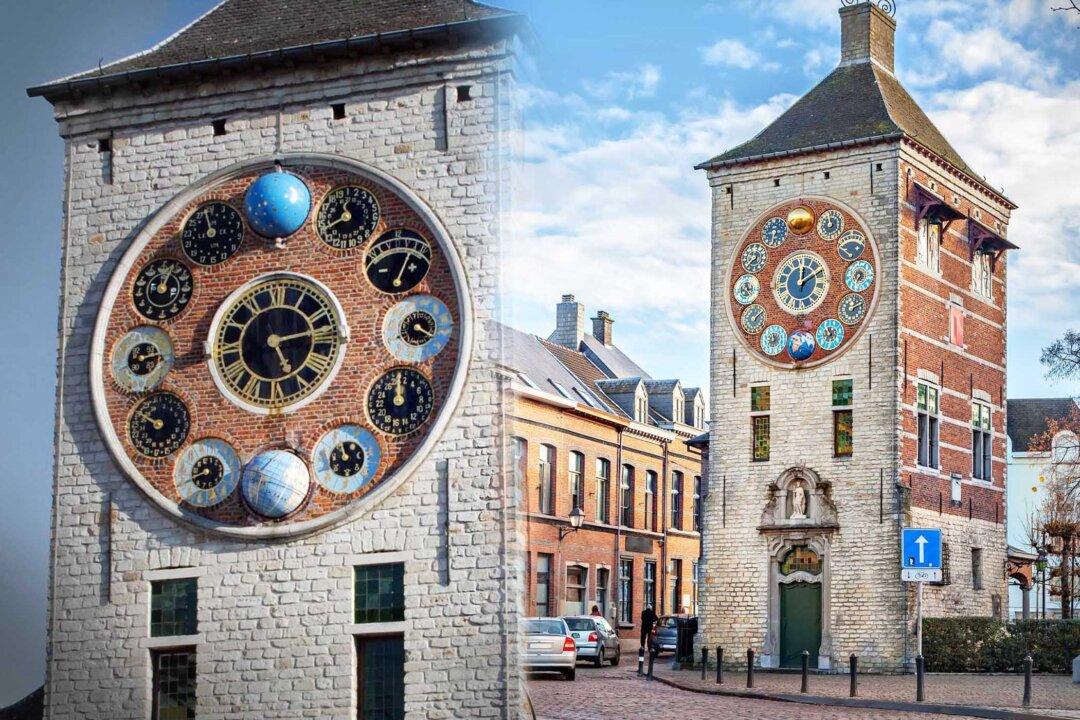Hidden away in a pretty Belgian town is an extraordinarily beautiful and curious clock tower. Donated to the town by autodidact Louis Zimmer, it sits in the wall of a large tower and features no less than ten faces and two globes arranged around a central clock, decorated in blue and gold.
The best time to visit one of the world’s most impressive clock towers is at noon. Not only does this spectacular creation in the town of Lier show everything from moon phases and the zodiac to tidal movement and the time on different continents, but when the regular clock strikes 12, something fun happens.
Like a more sophisticated version of a cuckoo clock, a carousel pops out of a door, revealing a procession of Belgian kings, mayors of the town, and coats of arms intended as an ode to history. Above this are four moving automatons representing the four stages of life, in the form of characters from Belgian fame and folklore.

Mr. Zimmer, a local watchmaker who became clockmaker to the king of Belgium, was a strong royalist. After developing a fascination with astronomy, he embarked on a five-year project to construct his jubilee clock. Presented to Lier in 1930 to mark 100 years of Belgian independence, Mr. Zimmer also intended to introduce the world to the wonders of astronomy with his creation.

A large globe rotates once every 24 hours; the visible part shows which part of Earth is experiencing day at any one time. Grand symbology corresponding to gods and goddesses is used to depict the seven days of the week, with another clock dial marking the month. Charming illustrations inscribed into a separate dial indicate the four seasons of spring, summer, autumn, and winter. The care Mr. Zimmer took to add incredible detail and precision to his work is evidenced in his use of Arabic numerals to state the amount of days in a particular season, and hours in Roman numerals.
The clock also tells the tides, the seasons, the phases of the moon, and even the moon’s age. The measurements of certain asteroids are also revealed.
Not satisfied with resting upon completion of the magnificent jubilee clock, the revolutionary horologist went on to design and manufacture his famous Wonder Clock. Housed in a museum next to the Zimmer tower, it stands almost 16 feet high, weighs 2 tons, and features 93 dials and 14 automatons.



The Wonder Clock was built for the 1935 World Fair in Brussels and later exhibited in New York. It features the slowest-moving mechanical hand in the world: with one rotation every 25,800 years, corresponding to the Earth’s axial precession cycle. The fastest clock hands revolve once around the dial in an incredible hundredth of a second. Mr. Zimmer’s contemporary Albert Einstein, who saw the clock in person, was captivated by its workings.


Also contained in the museum adjacent to Zimmer tower is the inventor’s astronomical studio. Conscious of the public’s lack of education in the field of astronomy, Mr. Zimmer installed revolving discs on the ceiling to illustrate the movements of the planets. The studio was finished in 1932, just two years after the delivery of the jubilee clock. Mr. Zimmer died on December 12, 1970, six months after being proclaimed an honorary citizen of Lier.








